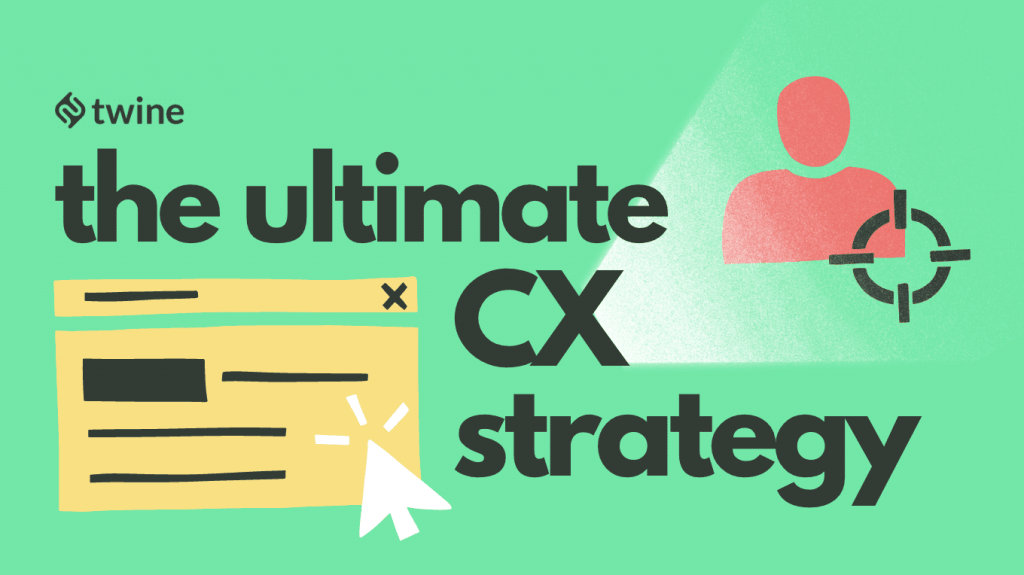
For more Productivity Tools, check out the Business Toolkit…
Crafting the perfect customer experience (CX) strategy is more of an art than a science.
You have so many stakeholders to consider – customers, employees, and management – that it seems like you’ll never be able to satisfy everyone.
Truthfully, if you can take care of the customers, then everything else will follow. That’s why having a strong CX strategy should not just be a priority on your company’s to-do list, but the focal point of your marketing strategy.
Need help creating the business of your dreams? Here’s where Twine can help…
What is a Customer Experience (CX) Strategy?
Customers have several touchpoints with your brand. Depending on your sales cycle and the industry you’re in, they may have only a few, or several dozen, over a few years.
A CX strategy is a plan that businesses develop to maximize every customer interaction. Each member of your team that interacts with a customer should have a rough guideline of how to handle various situations.
These strategies aren’t created out of thin air. Good strategies will take into account existing (and ongoing) customer data, along with an eye to what your competitors are doing. You also need to consider their company vision.
How much do we want to emphasize our customer service?
Although the team members that directly interact with customers will need to consider this, this process involves everyone. Management, salespeople, support, and even the mailroom person – all need to understand what’s expected of them when they interact with customers.
How to Create the Ultimate CX Strategy in Five Steps
You know that you need a CX strategy, but where do you start? Read through these five easy steps, and you’ll have a solid customer experience strategy in no time…
Learn your audience
Before you can hope to serve your audience, you have to understand who they are.
Hopefully, your sales team already has a good understanding of who you’re trying to reach. But, you should also take customer service data into account as well.
For best results, sit down with your team and create a buyer persona. Who are you serving? What are their needs and pain points? What motivates them to not only buy your product or service but turn into loyal customers instead of jumping ship?
Personalization is the key to good customer service. You’re not just talking to a nameless face, you’re interacting with real people.
Granted, it can be hard to find out just exactly who your audience is these days due to privacy laws, so employing a synthetic data generator may help. These services allow you to access sensitive data about your customers while still being compliant with ever-changing rules and regulations.
Audit your existing strategy
Based on your understanding of who your audience is, how effective is your current strategy?
Chances are you have several practices that your customers love, but, it’s just as likely you have a few that they don’t. Find out what’s working and what’s not to create a list of action items to tackle.
Your customer support team will be your first stop in developing a new CX strategy. The data you’re looking for will come from two locations: customer surveys, and metrics (hard data).
You’ll have to marry these two sources together to find what’s really happening between your company and your customers.
Use this data to establish benchmarks to build off of. It’s important to not inflate these numbers; you want the truth of your current situation so you can build off of it later.
Also, don’t go crazy with this data, or else it’ll be impossible to track down the road. Shoot for 5-10 KPIs and add those to a list that all relevant parties can monitor.
Remember to check these metrics moving forward, tracking your performance over time. Don’t wait until the end-of-the-year survey to re-evaluate what’s going on. If you see an issue that needs to be handled, step in and take care of it.
What you really want to do in this step is to define your ideal customer service environment and get as close to that as possible. Don’t fret if you’re not even close to that idyllic scenario, with a little work every day, you will soon get there.
Identify major interaction points
No matter how many points you have between your brand and your customer, some are more valuable than others. All of them matter, but, an onboarding phone call, for example, is more important to your company’s bottom line than a tech support email.
Those moments that move the needle for your brand require a more deft touch. These are the moments where you can most accurately speak to your customer’s pain points and win their business. Train your staff to look for opportunities like this and really go the extra mile in catering to your customers.
Consistency in your customer service is what wins the most points with your customers. If they have a great initial discovery call with a salesperson and then a subpar experience with a member of your support staff, it’s going to negatively impact your standing in their eyes.
To solve this, think about what it is that they expect at all points and deliver in those areas. If nothing else, a chat support email should be answered promptly, and a website should be easy to use. If your sales pages are driving customers away, consider using a landing page tool.
Need help finding a good landing page builder? Check out our list here.
As part of your ongoing data collection, you should also use exit surveys as often as you can. Overwhelming your customers with these types of requests is never a good idea, but, putting a few short surveys at your major points of interaction will provide you valuable insight.
Create problem-solving resources
Customer service is all about solving problems. Whether that problem is a service you provide or a technical issue that needs to be fixed, a good CX strategy always strives to solve as many problems as possible.
Unfortunately, there’s no way your team can be everywhere all at once. Every brand has a finite amount of resources at any one point in time, so, developing several resources – such as a list of frequently asked questions – will help your customers receive the support they need without taxing your company.
If you haven’t started using them yet, chatbots can help shoulder some of this load. Your support team can set up a list of automated responses to common issues and reroute customers to blog articles or whitepapers that can answer questions.
If the problem requires an actual human to handle these questions, they can also create a support ticket for your staff to answer later. This allows your team to focus only on those questions that require their time, which decreases overhead.
Content within your CX strategy
A big part of your CX strategy should be creating content and communicating constantly with your users and customers via social channels. This allows your brand to stay positioned as a point of authority.
YouTube is the perfect platform for this as you can create all kinds of videos and audiovisual content to support your products or other efforts.
To ensure your profile is professional and on point, only feature banner graphics that are attention-grabbing, and match your business brand. You can even use a youtube banner maker to make keep your visuals super engaging.
Speaking of social media, remember to actively engage in “social listening” to see what your customers’ major issues are. Good social listening means meeting your customers where they spend most of their time.
The more problems you can solve for your customers, the more your revenue will reflect this effort.
Emphasize continual training
Try as you might, your CX strategy will never be perfect. There will always be documents to update, systems to automate, and new tactics to deploy. Your employees will need to be continually trained on these new practices, to make sure they’re well-equipped when interacting with your customers.
Your staff needs to feel empowered to handle customer issues, which means improving your resources through online learning platforms. Display effective communication guidelines throughout the space to remind your staff of brand expectations – and support them if they fall short.
In the end, a good CX strategy isn’t about simply having bodies in seats, it’s about having a team with the right soft skills that can empathize with your customers. Customers expect authenticity from your company. They want to be heard, and they want even the smallest interactions to be prioritized.
Wrapping up
As you audit your existing CX strategy, what are some things you notice? There is always room to improve, but you most likely have assets in place that can turn your customer service into a real asset.
By following a strategy, this process can also be duplicated no matter how many team members you add or subtract. It might just be the consistency your customers need the most.
Ready to hire? Our marketplace of over 410,000 diverse freelancers has the skills and expertise needed to skyrocket your business. From marketers to designers, copywriters to SEO experts – browse the talented bunch here!








